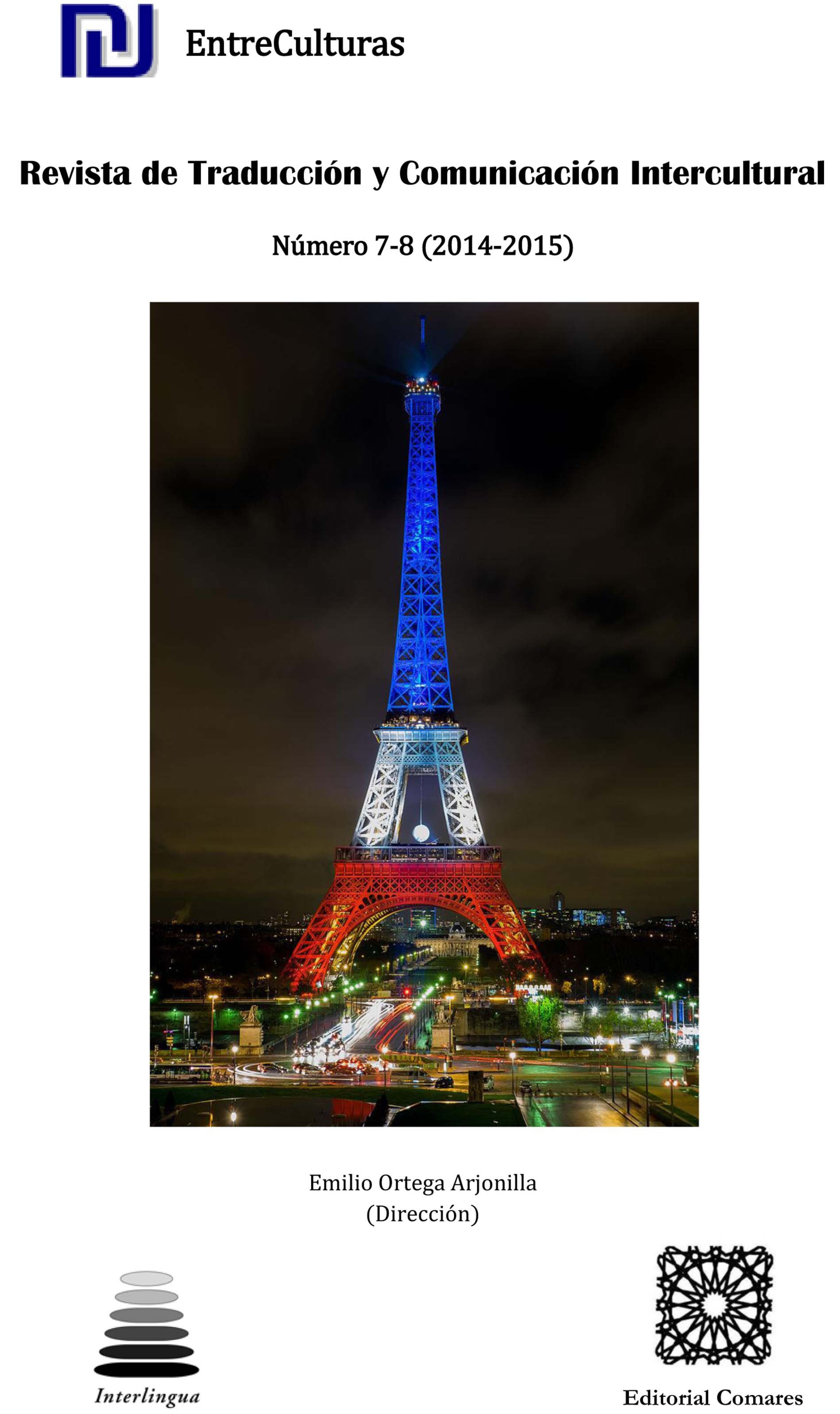LA SUSTANCIACIÓN LINGÜÍSTICA DEL PROCEDIMIENTO PENAL: EL COMPLEMENTO TRASLATIVO (II)
DOI:
https://doi.org/10.24310/Entreculturasertci.vi7-8.11353Keywords:
Linguistic substantiation, court interpreting, linguistic intentionality in criminal proceedingsAbstract
In this paper the author presents some features of the linguistic substantiation of criminal court proceedings in order to relate it to the process of court interpreting, an unavoidable component of the former in situations of diversity of linguistic systems. The author exposes the intentionality of the discourse that is built in court and unveils its influence in the translation process. Finally, this study deals with the dialectic fight of the parties as one of the mechanisms that bestows great dynamism to the substantiation in criminal proceedings.
Downloads
Metrics
References
Brennan, Colleen B. (2001). “Linguistics and the Law”. Disponible en: http://www.csa.com/discoveryguides/linglaw/overview.php
Capella Hernández, Juan Ramón (1999). Elementos de análisis jurídico. Madrid, Trotta.
Cazorla Prieto, Luis Maria (2007). El lenguaje jurídico actual. Madrid, Aranzadi.
Mairal Usón, Ricardo (2012). Teoría lingu?ística: métodos, herramientas y paradigmas. Madrid, Editorial Universitaria Ramón Areces.
Derrida, Jacques (1997). El fundamento místico de la autoridad. Madrid, Tecnos.Dueñas Ruiz, Oscar José (2004): Lecciones de hermenéutica jurídica. Bogotá, Centro Editorial Universidad del Rosario.
España (2011). Constitución Española. Disponible en: https://www.boe.es/buscar/pdf/1978/BOE-A-1978-31229-consolidado.pdf
España (2015). Ley de Enjuiciamiento Criminal. Disponible en: https://www.boe.es/buscar/pdf/1882/BOE-A-1882-6036-consolidado.pdf
España (2015). Ley Orgánica del Poder Judicial. Disponible en: http://www.boe.es/buscar/pdf/1985/BOE-A-1985-12666-consolidado.pdf
Etxebarría Aróstegui, Maitena (2007). “Lenguas y culturas en contacto: diversidad sociolingu?ística en Colombia” en Luque, Juan de Dios y Pamies, Antonio (eds): Interculturalidad y lenguaje II. Identidad cultural y pluralidad lingu?ística. Granada, Granada Lingvistica, 291-301.
Gonzales Salgado, Antonio (2007). “El lenguaje jurídico del siglo XXI”. Disponible en: <http://www.lingua.gal/c/document_library/get_file?file_path=/portallingua/curso/superiorxuridic /El_lenguaje_juridico_del_siglo_XXI_J._A._Gonzalez_Salgado.pdf
Linares Quintana, Segundo (1998). Tratado de Interpretación Constitucional. Buenos Aires, Abeledo Perrot.
Margadant, Guillermo (1991). Panorama de la Historia Universal del Derecho. México DF, Miguel A. Porrúa.
Ministerio de Justicia (2011). Informe de la Comisión de Modernización del lenguaje jurídico. Disponible en: http://lenguajeadministrativo.com/wpcontent/uploads/2013/05/cmlj-recomendaciones.pdf
Páez Mañá, J. (2001). “Lenguajes jurídico-documentales”. Disponible en: http://www.iberius.org/es/AisManager?Action=ViewDoc&Location=ge tdocs:///DocMapCSDOCS.dPortal/2503
Sánchez Cordero, Olga (2003). “Perspectiva de género e interpretación judicial”. Intervención para el Instituto de la Judicatura Federal. Distrito Federal. Disponible en: https://www.scjn.gob.mx/conocelacorte/ministra/PERSPECTIVA%20DE%20GENERO%20E%20INTERPRETACION%20JUDICIAL.pdf
Wróblewsky, Jerzy (1988). Constitución y teoría general de la interpretación jurídica. Madrid, Cuadernos Civitas.
Downloads
Published
How to Cite
Issue
Section
License
All contents published in Entre culturas. Revista de traducción y comunicación intercultural are protected under the Creative Commons Attribution-NonCommercial-ShareAlike 4.0 International (CC BY-NC-SA 4.0) license. All about this license is available in the following link: <http://creativecommons.org/licenses/by-nc-sa/4.0>
Users can copy, use, redistribute, share and exhibit publicly as long as:
- The original source and authorship of the material are cited (Journal, Publisher and URL of the work).
- It is not used for comercial purposes.
- The existence of the license and its especifications are mentioned.
There are two sets of authors’ rights: moral and property rights. Moral rights are perpetual prerogatives, unrenounceable, not-transferable, unalienable, imprescriptible and inembargable. According to authors’ rights legislation, Entreculturas. Revista de traducción y comunicación intercultural recognizes and respects authors moral rights, as well as the ownership of property rights, which will be transferred to University of Malaga in open access. The property rights are referred to the benefits that are gained by the use or the dissemination of works. Entreculturas. Revista de traducción y comunicación intercultural is published in an open access form and it is exclusively licenced by any means for doing or authorising distribution, dissemination, reproduction, , adaptation, translation or arrangement of works.
Authors are responsable for obtaining the necessary permission to use copyrighted images.





7.png)
